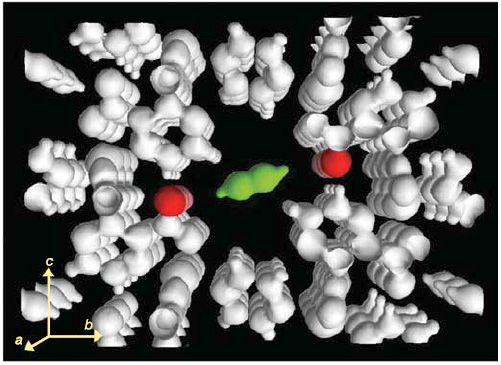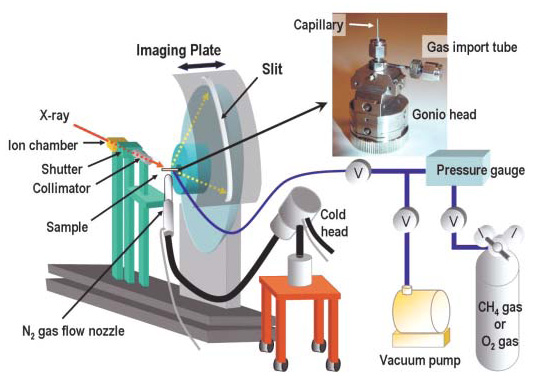One-dimensional array of acetylene molecules adsorbed in a metal-organic microporous material
Inquiry number
SOL-0000000926
Beamline
BL02B2 (Powder Diffraction)
Scientific keywords
| A. Sample category | organic material |
|---|---|
| B. Sample category (detail) | solid-state crystal, organic material, crystal |
| C. Technique | X-ray diffraction |
| D. Technique (detail) | powder diffraction |
| E. Particular condition | low-T (~ liquid N2), Gas Adsorption |
| F. Photon energy | X-ray (4-40 keV) |
| G. Target information | structure analysis, crystal structure, function and structure, charge density |
Industrial keywords
| level 1---Application area | cell (battery), environment, Chemical product |
|---|---|
| level 2---Target | fuel cell, catalysis |
| level 3---Target (detail) | electric rod |
| level 4---Obtainable information | crystal structure, adsorption |
| level 5---Technique | diffraction |
Classification
A80.32 organic material, M10.20 powder diffraction
Body text
Powder diffraction is a powerful technique to study crystal structures. Using this technique, one can measure structural parameters such as lattice parameters, atomic positions, etc of crystalline materials. By using synchrotron radiation one can also obtain charge density level structures closely related with physical properties as well as structural parameters. The figure shows charge density distributions obtained by analyzing diffraction data of a metal-organic solid under acetylene gas adsorption. These data reveal the fact that adsorbed acetylene molecules(green color)form a one-dimensional array in a metal-organic microporous material.
Fig. Charge densities of a metal-organic microporous material with acetylene molecules.
[ R. Matsuda, R. Kitaura, S. Kitagawa, Y. Kubota, R. V. Belosludov, T. C. Kobayashi, H. Sakamoto, T. Chiba, M. Takata, Y. Kawazoe and Y. Mita, Nature 436, 238-241 (2005), Fig. 4,
©2005 Nature Publishing Group ]
Source of the figure
Original paper/Journal article
Journal title
Nature, 436 (2005) 238.
Figure No.
4
Technique
Synchrotron radiation powder diffraction is a powerful technique to study crystal structures. The technique is applicable to conditions under gas adsorption and provides knowledge about the structures with adsorbed gas molecules.
Fig. A large Debye-Scherrer camera with a gas handling system.
Source of the figure
Original paper/Journal article
Journal title
SPring-8 利用者情報, 8 (2003) 406.
Figure No.
2
Required time for experimental setup
1 shift(s)
Instruments
| Instrument | Purpose | Performance |
|---|---|---|
| Large Debye-Scherrer camera | Powder diffraction | Camera radius: 286.48mm, Temperature: 15-1000K |
References
| Document name |
|---|
| R. Matsuda et al., Nature, 436 (2005) 238. |
Related experimental techniques
Single crystal structure analysis
Questionnaire
The measurement was possible only in SPring-8. Impossible or very difficult in other facilities.
This solution is an application of a main instrument of the beamline.
With user's own instruments.
Ease of measurement
With a great skill
Ease of analysis
Middle
How many shifts were needed for taking whole data in the figure?
Four-nine shifts


